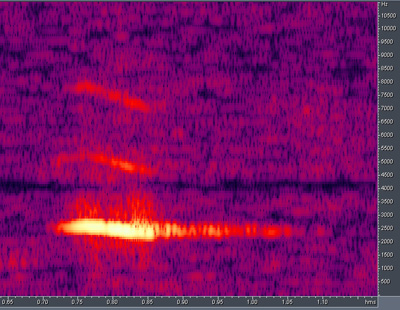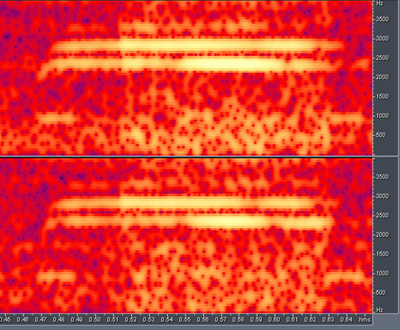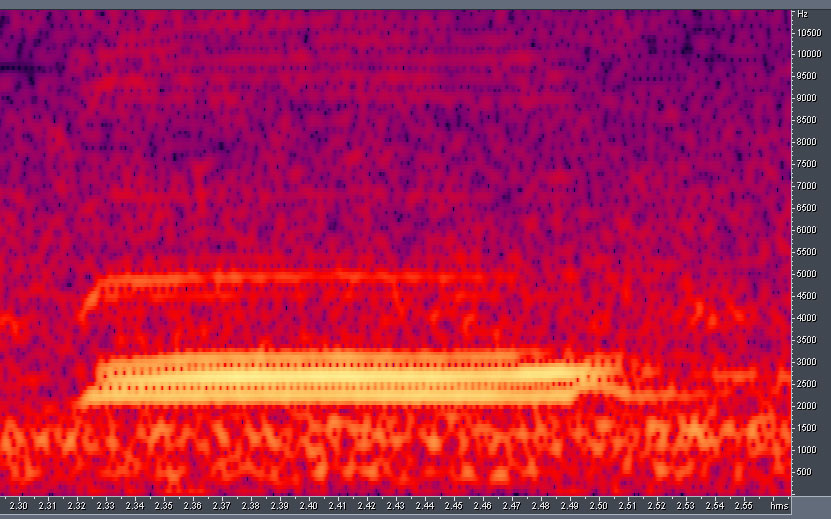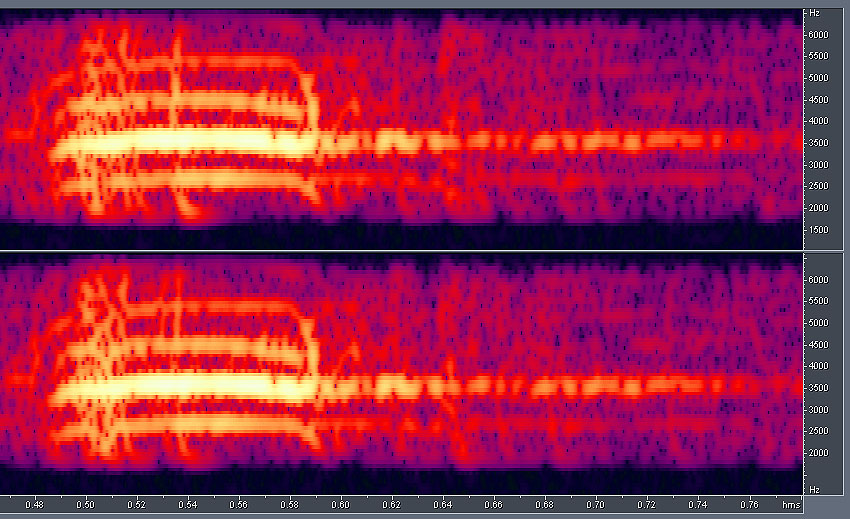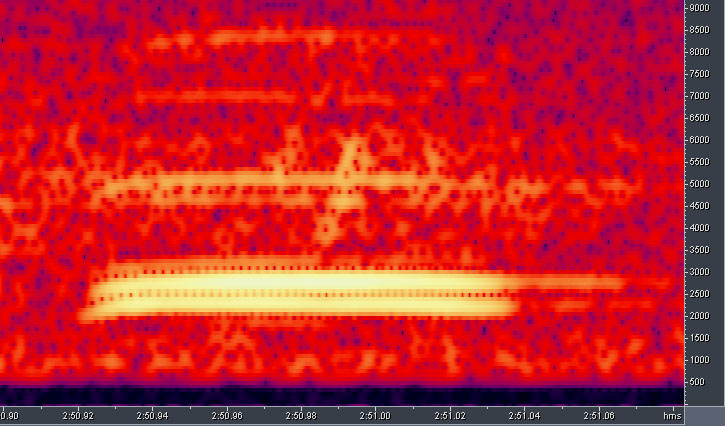
During the autumn of 2004 an invasion of Northern Bullfinches (Pyrrhula pyrrhula pyrrhula) has been going on. The call of the bullfinches differs markedly from those, who we are used to. Their appearance does not differ very much from our "normal" bullfinches. I have heard or seen them both on the island of Öland and in Vallentuna municipality, c. 30 km NE of Stockholm from early October 2004 until early April 2005. Bill Douhan reports the first of the invaders at Svenska Högarna on September 28th and October 9th they are found at Landsort (Roland Staav). A number of days in October Kjell Eriksson has reported a powerful migration of bullfinches over the Angarn Marsh as well as over the Högdala waste dump. I have seen and heard them several times in the Angarn area.
Instead of the sorrowful whistle they sound as a plastic toy trumpet, or a mini version of trumpeter finch, Rhodopechys githaginea, (for those who have heard it on for example the Canaries). After a short interruption in the Angarn area, trumpeting bullfinches have again been heard - from late December until early April 2005. This is reported by for example Svante Söderholm. Myself, I have regularly seen and heard trumpeting bullfinches at Svista, Össeby-Garn during this period. Latest observation is April 4th. Until that day the trumpeting bullfinch has been frequent at Svista. May it be so, that they have been on their way back towards the East? After April 4th only Whistling Bullfinches are heard.
In Great Britain these "new" bullfinches have been named "Trumpeting Northern Bullfinch". To be able to divide between the two types of bullfinch I will call our "indigenous" bullfinch "Whistling Northern Bullfinch".
This invasion that reached the British Islands has been large-scale. As a consequence of the fact, that we have the race (P. p. pyrrhula) normally appearing in our area, it might be so that not all birdwatchers have reacted on the unusual call. One bird, ringed at Stora Fjäderägg has been controlled on Fair Isle, Shetland. Biometric measurements have shown that the wings are longer than the migrators that pass St. Fjäderägg a normal autumn. Birds have been observed in considerable parts of Great Britain, in the Switzerland, Germany and Bulgaria, as well as on Iceland.
On the British Isles this invasion has been lively debated (http://www.birdforum.net/showthread.php?t=24605&page=1&pp=25), but here in Sweden the invasion did not seem to have been noticed at once by all bird watchers.
A good article is found here: http://www.birdsireland.com/pages/site_pages/features/bullfinch.html.
Parts of the discussion on the message board "Brevduvan" (“the Carrier Pigeon") of Club300 regarding trumpeting bullfinches is found on Gebbe Björkman's home page [in Swedish though].
Is it possible to divide between the trumpeting and the whistling bullfinches? The opinion on that seems to differ between bird watchers. As said, biometric analyses have shown that the wings are longer among the trumpeters. Some birdwatchers have claimed that the trumpeters are bigger that the normal population, but probably this is depending on ornithologists in western and southern Europe who compare with their local races. Other distinguishing characteristiscs discussed are: 1. males of the trumpeting population has a stronger red colour on the breast, females sometimes a more grayish rose colour compared with whistling bullfinch. 2. Trumpeters have more evident and broader wing bars than the whistlers. 3. The outer tail feathers have a white longitudinal mark (evidently this is also true for the western population, but the frequency increases towards east). See a picture of this link 4. The red colour of the male trumpeter goes further back on the underparts than in whistling males (WRONG! this is a characteristic of the race (P. p. rossikowski) found in for example Caucasus). 5. The white rump is larger among trumpeters. 6. Other ideas on plumage charcteristics are: the black on the head goes unevenly far in the neck in the two populations, the border between the black on the head and the side of the head forms an even curve in some birds whereas there is a tendency toward an angle behind the eye in others (this is maybe an effect of the eye extending somewhat into the red/grey on the side of the head, see this link), a number of specimens have a white line under the eye. But proofs of different characteristics are still to be proven, maybe the differences listed here are just a normal variation within the race.
Both trumpeting and whistling northern bullfinches have been singing in February trough April 2005. Both males and females sing. It seems to me that the song of the trumpeter is more "squeeky" that the song of the whistler, but there is for shure considerable individual variation also by "our own", whistling bullfinch.
In the garden the trumpeters were more hesitant to come down to the feeders compared with the whistlers. Can this depend on that they were used to other types of feed than the whistlers? From February on it changed in that way that also the trumpeters came down to the feeders.
The home range of these birds has been unclear. However, on the British site I found a link to recordings of northern bullfinches made in Syktyvkar in the Komi Republic in the NE part of European Russia, that have the same call as the invaders (examples presented below). The recordings are made by Annika Forstén and Antero Lindholm. I have taken some small samples from these files and added a whistling bullfinch for comparison (Stieg Carlsson and Per-Erik Gydemo): bullfinches. Starting from that we could say that the trumpeting bullfinches are probably coming from the European part of the Russian taiga, or even more far away. However, in the Dutch equivalent to ”Vår fågelvärld” a reference to a letter is given indicating that trumpeting northen bullfinches were found breeding so far west as in Utsjoki in northern Finland, near the Norwegian border. The population is not, in fact, brand new to western Europe, there are Swedish records from a number of winters and a number of Finnish birdwatchers claim that they are heard in eastern Finland in winter.
An idea came to my head: might it be so, that the Siberian Tits (Parus cinctus) observed in the district of Uppland during the winter of 2004/2005 are part of the same invasion? Read about siberian tits in our own home area!! Maybe are the Waxwings (Bombycilla garrulus) and the Pine Grosbeak (Pinicola enucleator) also part of the same invasion? And if so, what has happened in their home area during late summer or autumn 2004? According to a message from somewhere in Europe the snow had come one month earlier than normal in the Caucasus, but this is probably not the breeding area for the ”trumpeters” – maybe a few observations from SE Europe concerns the race breeding in this area?
Calls from The Komi Republic, NE European Russia
Calls from the Netherlands and Iceland
Calls from Shetland
Whistling northern bullfinch from Svista, Össeby-Garn, municipality of Vallentuna February 4th 2005
Trumpeting northen bullfinch from Svista, Össeby-Garn, municipality of Vallentuna January 31st 2005
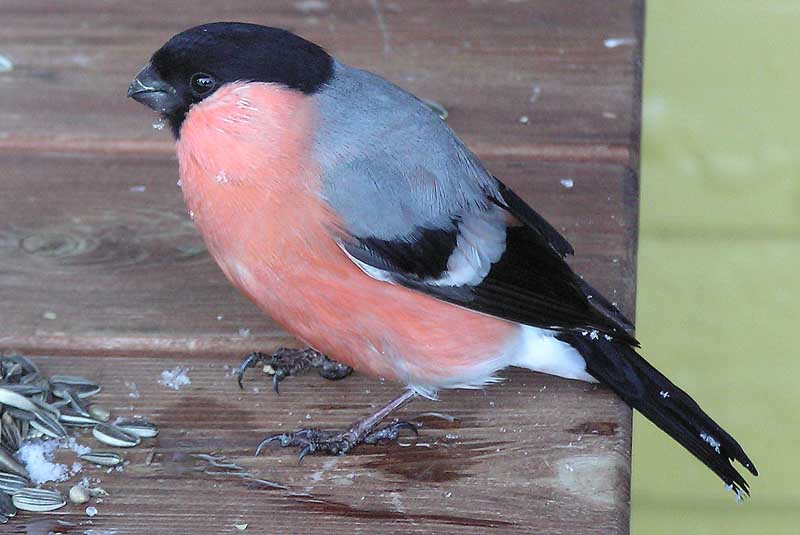
An analysis of the call of whistling and trumpeting northern bullfinches displays totally separate structures. The whistling population displays a pure tone somewhat sinking in pitch (see figure below). This makes the call sorrowful. At the beginning of the call the pitch goes up considerably, but this is made within hundreds of a second so a human ear cannot hear that.
The trumpeting bullfinches have a call built in quite another way, it is even difficult to imagine that it is the same species. These bullfinches have two or three tones simultaneously. It is these two – three tones, sounding with a difference in pitch of c. 500 Hz (Hertz) that makes the call sound like a toy trumpet (the Trumpeter Finch that displays a similar call has 5-10 parallel tones). Unlike the indigenous bullfinches the tones are constant in pitch, but a similarity is that they have a starting sequence with increasing pitch and the sonogram indicates a very characteristic hook within the first two hundreds of a second. The call is also somewhat longer than the call of the whistling bullfinch.
The table below indicates the construction of the call of a whistling bullfinch. The pitch of the typical call has (after the first two hundreds of a second) a frequency (pitch) of 2,650 Hz and is after c. 0.13 seconds ending at a frequency of 2,400 Hz.
